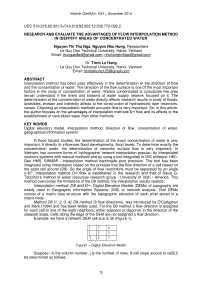Research and evaluate the advantages of flow interpolation method in identify areas of concentrated water
Автор: Nguyen Thi Thu Nga, Nguyen Nhu Hung, Trinh Le Hung
Журнал: Вестник аграрной науки @vestnikogau
Статья в выпуске: 6 (51), 2014 года.
Бесплатный доступ
Interpolation method has been used effectively in the determination of the direction of flow and the concentration of water. The direction of the flow surface is one of the most important factors in the study of concentration of water. Waters concentrated is cumulative line area terrain understand if the rivers and streams of water supply network focused on it. The determination of the concentration of water directly affects research results in study of floods, landslides, erosion and indirectly affects to the construction of hydroelectric dam reservoirs, canals. Choosing an interpolation methods accurate flow is very important. So, in this article, the author focuses on the advantages of interpolation methods D∞ flow and its effects to the establishment of centralized water than other methods.
Digital elevation model, interpolation method, direction of flow, concentration of water, geographical information system
Короткий адрес: https://sciup.org/147124554
IDR: 147124554 | УДК: 519.218.82.001.5+519.218.82.003.12:532.772-032.2
Текст научной статьи Research and evaluate the advantages of flow interpolation method in identify areas of concentrated water
In flood hazard studies, the determination of the exact concentration of water is very important. It directly to influences flood developments, flood levels. To determine exactly the concentration water, the determination of networks surface flow is very important. In Vietnam, two common forms of hydrographic network interpolation popular: by Interpolated contours systems with manual methods and by using a tool integrated in GIS software: HEC-Geo HMS, SINMAP....Interpolation method handmade poor precision. The tool has been integrated using interpolation based on the principle that the flow direction of a cell based on the eight cell around (D8). So the angle of flow restrictions must be separated by an angle n.450. Interpolation method D∞ flow is established in the research and that of David G. Taborton’s method of water resources research group - University of Utah - America. This method overcomes the limitations of the D8 method, the interpolation results realistic.
Interpolation method : D8 and D∞. Digital Elevation Models (DEMs) of topography are widely used in Geographic Information Systems (GIS) to network analysis. Grid DEMs consist of a matrix data structure with the topographic elevation of each pixel stored in a matrix node.
Method D8 [1, 2, 3, 4]. D8 method (8 flow directions), was introduced by O'Callaghan and Mark (1984) and has been widely used. For the D8 method a flow direction is assigned for each cell to one of the eight neighbors, either adjacent or diagonal, in the direction of the steepest slope. Cells along the edge of the DEM are not assigned a flow direction.
Example: we have a network DEM cell size is 30 (Figure 1).
Figure1 – Digital Elevation Model
Suppose i is the column number, j is the number of rows. 8-cell slope around to cell2,2 be determined as follows:
|
Slope 1= Slope cell 1,1 |
=> |
cell 2,2 = (3-2)/30√2 = 0.023 |
|
Slope 2= Slope cell 2,1 |
=> |
cell 2,2 = (3-3)/30 = 0 |
|
Slope 3= Slope cell 3,1 |
=> |
cell 2,2 = (3-4)/30√2 = - 0.023 |
|
Slope 4= Slope cell 1,2 |
=> |
cell 2,2 = (3-1)/30 = 0.0667 |
|
Slope 5= Slope cell 3,2 |
=> |
cell 2,2 = (3-5)/30 = -0.0667 |
|
Slope 6= Slope cell 1,3 |
=> |
cell 2,2 = (3-7)/30√2 = -0.0943 |
|
Slope 7= Slope cell 2,3 |
=> |
cell 2,2 = (3-6)/30 = -0.1 |
|
Slope 8= Slope cell 3,3 |
=> |
cell 2,2 = (3-7)/30√2 = -0.0943 |
We have matrices slope and flow direction of cell2,2 as follows:
|
0.023 |
0 |
-0.023 |
|
0.0667 |
^--- |
-0.0667 |
|
-0.0943 |
-0.1 |
7-0.0943 |
Figure 2 – Matrix slope
With a larger DEM model would have a slope matrix as follows:
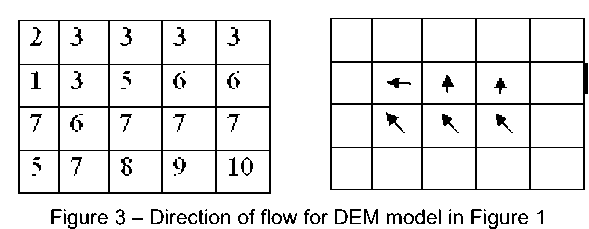
The D8 approach has disadvantages arising from the discretization of flow into only one of eight possible directions, separated by 45°.Meanwhile, the actual flow together to create any angle (Figure 4).
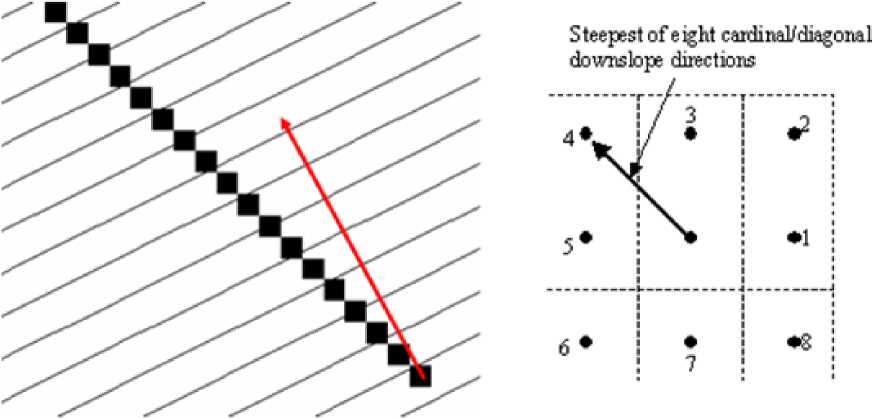
Figure 4 – Restriction of interpolation methods D8
Method Dinf (D∞).
-
a) Method Lea and Demon [1, 3, 4]
To address the limitations of D8, interpolation methods can flow direction magnitude value from 0 to 2π is Lea's first research and development (known as Lea method) and Burges Costa- Cabra and development (the Demon method call). They considered the interpolated flow direction as a ball rolling on a flat surface, the ball rolling down the place where it is lowest. That is the basis of the algorithm to find the direction of flow of a cell compared with 8 cell around. In the center of the cell which is considered balloon, plane angle is defined as 4 pixels. The value of this angle is defined as the average of value of the surrounding cells (Figure 5).
|
a) 13 i 9 .......L................. |
North 5 ! 9 I 11 |
|||
|
11 |
E В 9 |
A I 9 | 11 H |
12 |
|
|
9 |
C F 6.5 |
D 7 |
К 13 |
14 |
|
7,3 8 |
7o 6 .< 6 |
25 13 5.8 Sou tli |
95................17 30 |
25 12 |
Figure 5 – Model DEM with high values at the cell corners using Lea and Demon’s methods
This method results flow direction is any direction in the range 0 - 2π, overcoming limitations of D8. However, the direction of flow interpolation based only on the value edges that ignores the value of the adjacent cell center led to the interpolation is not accurate. On the other hand plane is created by 3 points in the plane in which the interpolation is made by 4 points. This is a limitation of the method of Lea and Demon (Figure 6).

a)
Figure 6 – Direction of flow by the method of Lea and Demon (Figure a). Under this method, the flow does not flow from cell A where the slope of the largest cell that runs on the edge EF J are considered the lowest of EFCD plane. Meanwhile, the actual flow is directed to the greatest slopes (Figure b)
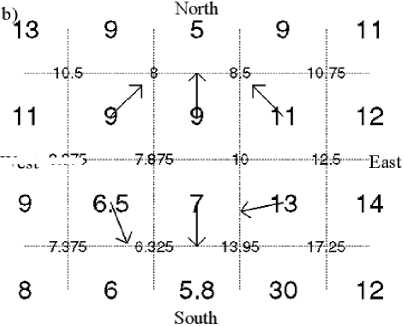
b)
WeHt-.g.^76
-
b) Method by David G Taborton [4]. In this method, the flow is determined on eight sides of the triangle. Eight triangular surfaces are formed from the center of the central cell and 8-cell center around. If the flow does not identical with the position 0, π / 4, 2π / 4, 3π / 4, 4π / 4, 5π / 4, 6π / 4, 7π / 4, the direction of flow will be determined between 2 pixels largest slope from the cell center. The angle of the flow is determined from 0 - 2π from east counterclockwise direction.
Column indices
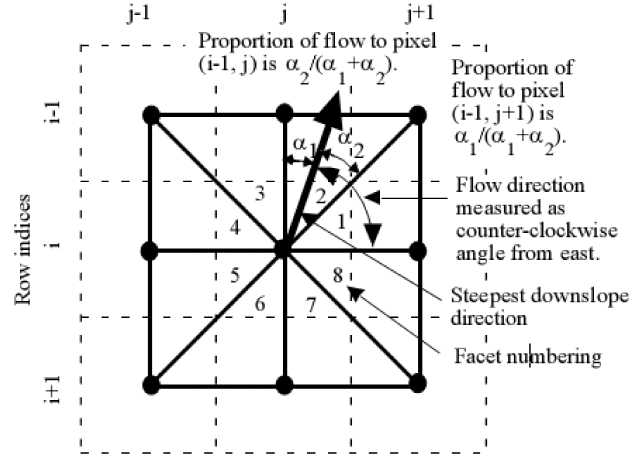
Figure 7 – Side depict the flow direction according to the method of David. Eight triangular faces formed from the cell center to the cell around 8.
First we consider a triangular surface (Figure 8).
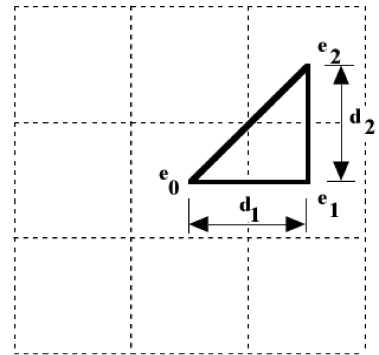
Figure 8 – Definition of variables to calculate the slope on a triangular plane
The slope is represented by the vector S1, S2:
S i =( e о - e i )/ d 1
5 2 = ( e\-e! ) / ^ 2
Considered e i, d i point elevation values and distance in Figure 5, the slope direction and magnitude is defined as follows:
r = tan 1 ( s2 / 5 ,)
I 2 . 2
5 — 5 S^ +5 2
If r is not in the range 0 to tan-1(d 2 /d 1 ) then r is calculated as follows:
if r <0, r = 0, s = s
if r > tan 1 ( d 2 / d 1), r = tan 1 ( d 2 1 d 1 ), s = ( e0 - e 2) / 7 d 2 -vd2
The calculation of flow direction and slope on the other side triangle using the same formula (1,2,3,4,5). However, due to the location of the different triangles, so we have to rotate and move the other side of the duck triangles to look like figure 8. The move will make the magnitude of flow direction (r values) to more rows depends on the location of the cell to the cell center from the east.
Steepest single direction
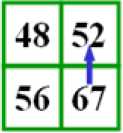
67 - 52 -------= 0.50
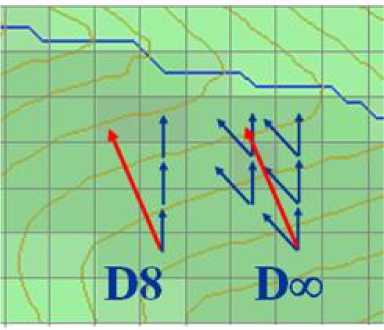
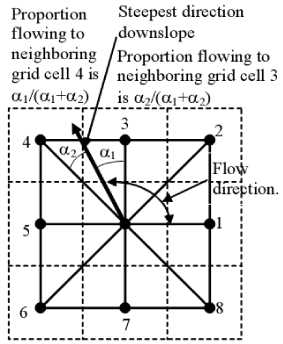

Figure 9 – Comparison of the flow direction in the D8 method, D∞ method of David G Taborton
The general formula for determining r for all eight sides of the triangle mesh as follows:
rg=afrm + a c П/2 (6)
In that a f , a c is the constant depends on the position of the central cell to cell (Table 1).
Table 1 – Facet elevation and factors slope and angle calculation
|
Facet |
1 |
2 |
3 |
4 |
5 |
6 |
7 |
8 |
|
e 0 |
e i,j |
e i,j |
e i,j |
e i,j |
e i,j |
e i,j |
e i,j |
e i,j |
|
e 1 |
e i,j+1 |
e i-1,j |
e i-1,j |
e i,j-1 |
e i,j-1 |
e i+1,j |
e i+1,j |
e i,j+1 |
|
e 2 |
e i-1,j+1 |
e i-1,j+1 |
e i-1,j-1 |
e i-1,j-1 |
e i+1,j-1 |
e i+1,j-1 |
e i+1,j+1 |
e i+1,j+1 |
|
a c |
0 |
1 |
1 |
2 |
2 |
3 |
3 |
4 |
|
a f |
1 |
-1 |
1 |
-1 |
1 |
-1 |
1 |
-1 |
David G Taborton method of taking advantage of more than D8 and D∞ method Lea and Demon. The use of eight triangular sides have identified the direction of flow under any angle (0 - 2π) has avoided the approximate value of the deviation easy Lea and Demon methods, while avoiding the effects of the cell area around the slopes below.
RESULTS OF RESEARCH
The study area in map F-48-14, Son La province. This is an area of complex terrain, in accordance with the test methods.
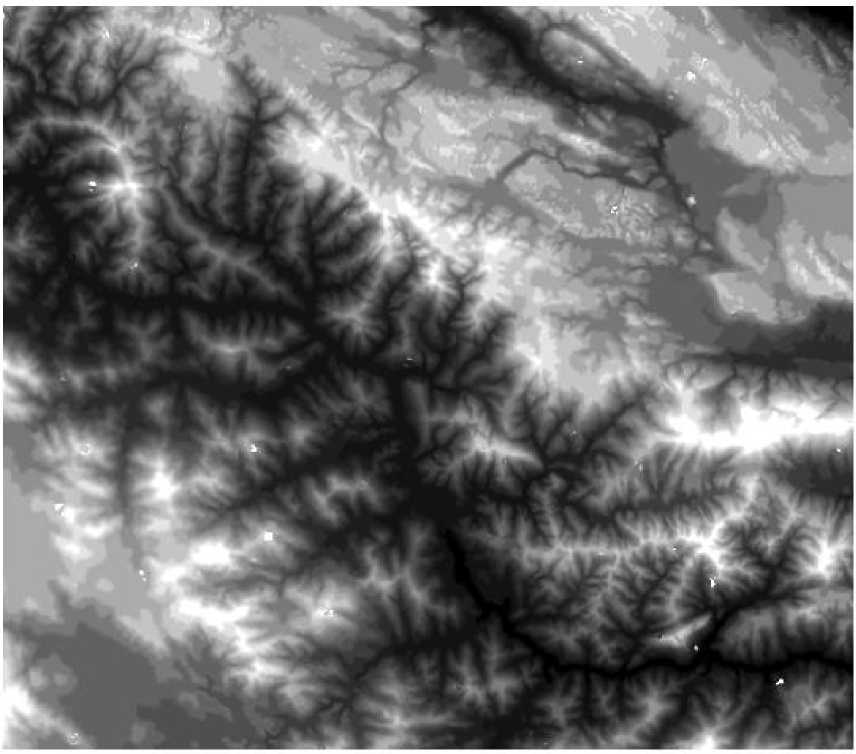
Figure 10 – Model DEM study area

(a) (b)
Figure 11 – Results of interpolation of flow according to two methods interpolation method D8 (a) and interpolation method D∞ David G. Taborton (b)
Overall results of the two methods do not differ much, but if your zoom interpolation results will clearly see the difference.

(a) (b)
Figure 12 – The flow changes markedly between the two interpolation methods: (a) interpolation method D8; (b) interpolation method D∞ David G Taborton
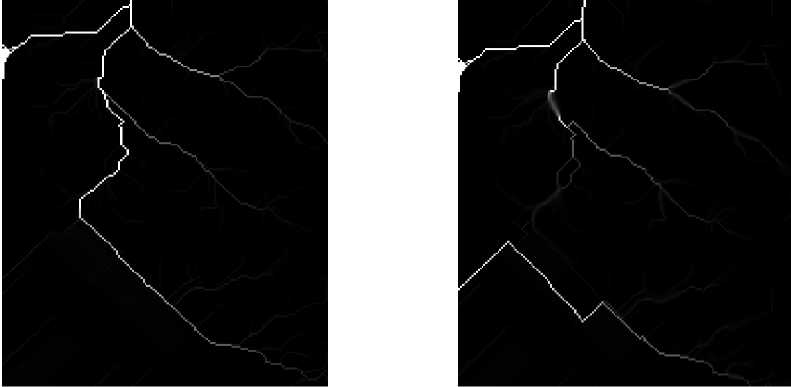
(a) (b)
Figure 13: Results of interpolation downright wrong at the border: (a) Interpolation method D8; (b) interpolation method D∞ David G Taborton
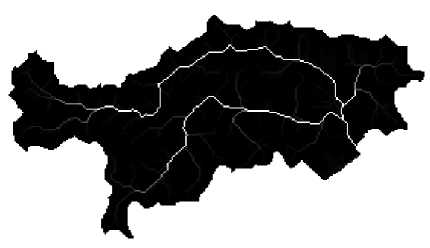
(a)
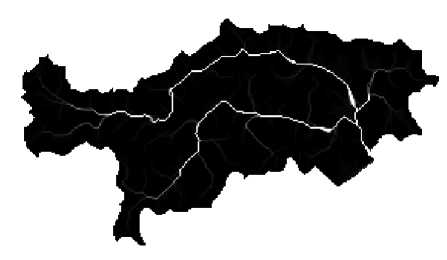
(b)
Figure 14 – The concentration of water: (a) interpolation method D8; (b) interpolation method D∞ David G Taborton
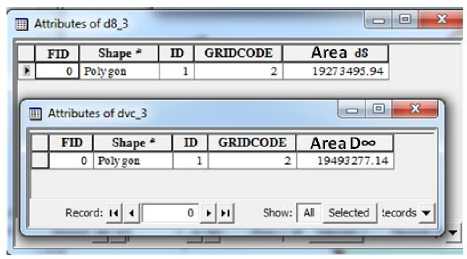
Figure 15 – Area of the different concentration of water is determined according to two methods of D8 and D∞ David G Taborton (unit m2)
CONCLUSIONS
For the interpolation method of network flow, D∞ interpolation method has higher accuracy both in theory and practical test. Interpolation D∞ network flow method should be used in the evaluation of natural disasters such as landslides, erosion, flooding... as well as the construction of drainage, drainage systems to achieve higher accuracy. In addition, interpolation infinity principle can apply in different terrain interpolation: aspect, slope, view shed.
Список литературы Research and evaluate the advantages of flow interpolation method in identify areas of concentrated water
- Tesfa, T. K., D. G. Tarboton, D. W. Watson, K. A. T. Schreuders, M. E. Baker and R. M. Wallace, (2011), «Extraction of hydrological proximity measures from DEMs using parallel processing,» Environmental Modeling & Software, 26(12): 1696-1709.
- Tarboton, D. G., (1989), «The analysis of river basins and channel networks using digital terrain data,» Sc.D. Thesis, M.I.T., Cambridge, MA, (Also available as Tarboton D. G., R. L. Bras and I. Rodriguez-Iturbe, (Same title), Technical report no 326, Ralph M. Parsons Laboratory for Water resources.
- Terrain Analysis: Principles and Applications, John Wiley and Sons, Wilson, J. P. and J. C. Gallant, (2000), New York, 479 p.
- Wilson, J. P. and J. C. Gallant, (2000), Terrain Analysis: Principles and Applications Wiley and Sons, New York, 479 p.
- Tarboton, D. G., (2003), «Terrain Analysis Using Digital Elevation Models in Hydrology,» 23rd ESRI International Users Conference, San Diego, California, July 7-11.
- Tarboton, D. G., (2003), «Terrain Analysis Using Digital Elevation Models in Hydrology,» 23rd ESRI International Users Conference, San Diego, California, July 7-11.
- Tarboton, D. G., R. L. Bras and I. Rodriguez-Iturbe, (1991), «On the Extraction of Channel Networks from Digital Elevation Data,» Hydrologic Processes, 5(1): 81-100
- Tarboton, D. G., K. A. T. Schreuders, D. W. Watson and M. E. Baker, (2009), «Generalized terrain-based flow analysis of digital elevation models,» 18th World IMACS Congress and MODSIM09 International Congress on Modelling and Simulation, ed. R. S. Anderssen, R. D. Braddock and L. T. H. Newham, Modelling and Simulation Society of Australia and New Zealand and International Association for Mathematics and Computers in Simulation, July 2009, p.2000-2006.
- Wallis, C., D. Watson, D. G. Tarboton and R. Wallace, (2009), «Parallel Flow-Direction and Contributing Area Calculation for Hydrology Analysis in Digital Elevation Models,» PDPTA'09, The 2009 International Conference on Parallel and Distributed Processing Techniques and Applications, Las Vegas, Nevada, USA, July 13-16.
- Wallace, R. M., D. G. Tarboton, D. W. Watson, K. A. T. Schreuders and T. K. Tesfa, (2010), «Parallel Algorithms for Processing Hydrologic Properties from Digital Terrain,» GIScience 2010, Sixth international conference on Geographic Information Science, Zurich, Switzerland, September 14-17.

